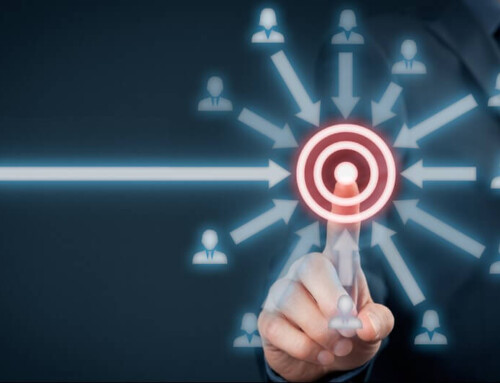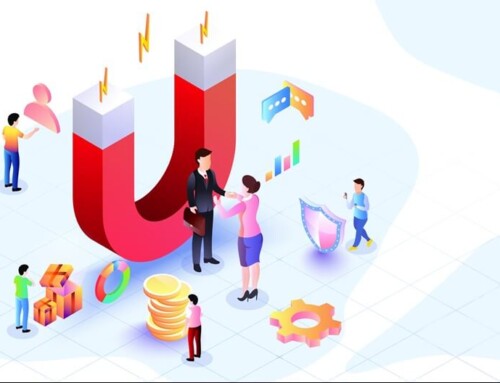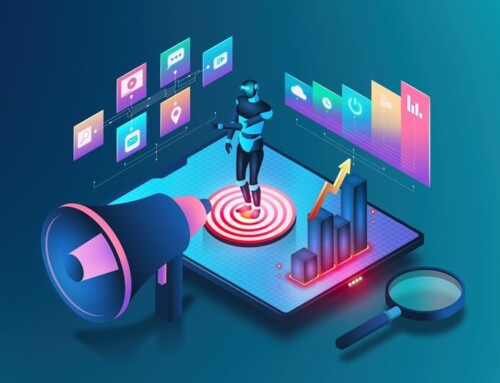The recent evolution of digital marketing’s relationship with business-to-business (B2B) sales and marketing strategies can seem confusing. On one hand, digital is quickly becoming the most frequently used type of marketing and virtual sales strategy and is utilized more often than ever before. On the other hand, trying to stand out from competitors using digital marketing tools and sales tactics alone is downright difficult.
Consider the following results from a Forbes Insights survey (1) completed by over 750 business executives:
- 91% of survey respondents indicated that face-to-face is better for persuasion purposes.
- Respondents also feel that decision-making is best done after in-person meetings, with 82% preferring them over their virtual counterparts.
- 86% of executives feel more engaged when they meet with salespeople in-person versus virtually.
To stay ahead of the competition requires marketing and sales strategies that consider a multi-pronged approach. Why should you consider working both digital and in-person tactics into your sales and marketing mix? While you should not dismiss the increasing popularity and reach of digital marketing, many senior executives and members of the c-suite still prefer in-person networking and meetings due to its increasing value.
Here are some of the ways successful companies are leveraging the strengths of digital tools while incorporating the human approach so many executives prefer.
1) TAILOR CONTENT TO AUDIENCE SUBSETS
There is almost too much marketing content online right now. And a significant percentage of it is generic. Content created to reach your entire customer base might seem more efficient than content tailored to your audience subsets, but in fact, it is far less effective. It will not make you stand out from your competition.
Buyers, including B2B buyers, want personalized marketing and sales content. They gravitate towards companies that demonstrate real knowledge of their unique pain points and needs, which the majority of customers say is not easy to find. In fact, 66% of buyers feel they are treated like numbers. (2) 52% of customers expect personalized offers, which is a major missed opportunity for organizations who do not personalize their content. (2)
To solve these issues, break your audience into subsets according to factors such as pain points, wants and needs. From there, target the different subsets. There are tools like tags, metadata and content categorization at your disposal that improve the chances of targeting success. You can target online ads on LinkedIn and other applicable social media platforms, as well.
2) MEET WITH BUYERS IN-PERSON
Yes, virtual meetings have become much more common in the last few years than they were previously. And yes, it is ok to carry out some of your sales techniques on digital platforms. But ─ and this is a big “but” ─ in-person meetings should remain a top priority for your sales team.
As mentioned above, meeting B2B buyers face-to-face will set you apart from the competition and make them feel more comfortable about investing time, money, and their loyalty in your offerings. Plus, when people are in the same space physically as other people, their engagement level automatically goes up. Distractions must work much harder to interfere with their concentration on the matter at hand.
Social cues also come into play here. Believe it or not, it is easier to interpret body language, and respond in kind, in-person than over a video call. And being able to accurately read social cues is critical for figuring out what a buyer might be thinking and how receptive they are feeling to your sales pitch.
PRO TIP: Don’t underestimate the power of in-person interaction! Research published in the Journal of Experimental Social Psychology found that requests made face-to-face are 34 times more effective than those sent by email. (3) Additionally, the same research found that in-person interactions not only improved cooperation, but had a surprising positive impact on influence, trust and resulted in better negotiation outcomes. (3) Furthermore, MIT’s Human Dynamics Lab found that 35% of a team’s performance was driven by the number of times they actually connected and spoke face-to-face. (4) So, to really make an impact, meetings in-person truly matter.
3) BALANCE AUTOMATION WITH HUMAN INTERACTION
There is no doubt about it: Artificial intelligence (AI) can be a valuable marketing tool. The technology behind AI is improving in leaps and bounds, seemingly on a daily basis. It is the powerhouse behind marketing tactics like automated drip email campaigns that detect and target where a sales lead is in the buyer’s journey. AI can be extremely helpful and improve efficiency, productivity as well as gain insights about prospects and buyers.
That said, you should not neglect human interaction in your sales and marketing efforts. At the end of the day, establishing trust with B2B buyers will be easier if they interact with real, flesh-and-blood salespeople than with AI alone. The human element still reigns supreme, even in the wake of recent technological advancements.
4) OFFER INCENTIVES FOR CUSTOMER LOYALTY
A loyalty program might seem far-fetched for B2B customers, but a growing number of companies are using this sales tactic. The acquisition cost for new customers is rising along with so many other costs, making it five times more expensive to land a new customer than to retain an existing one. (5) If you are still not convinced that a loyalty program is worthwhile, consider this: Improving customer retention by a mere 5% boots profits by 25% to 95%. (6)
The secret of cementing your worth to a potential B2B customer is proving that you will become a dependable long-term partner that consistently adds value to their organization. One way is to ensure excellent customer experiences starting from initial contact all the way through the entire buyer lifecycle. Another is to offer B2B customers an incentive to be loyal to your company.
PRO TIP: B2B loyalty programs are designed to help set your organization apart from competitors. Some examples of loyalty rewards designed for B2B organizations include VIP access to events, discounts on large orders, points that can be redeemed for credit, special rewards for referrals that convert into customers, and more. Non-cash rewards, such as travel, are very popular incentives. According to the Incentive Research Foundation, 81% of top performing B2B companies offer non-cash incentives to clients. As a result, non-cash incentives yielded valuable benefits such as a 32% increase in total revenue and a 30% increase in market share. (7)
SUCCEED WITH A MULTI-FACETED APPROACH
Today’s B2B sales and marketing landscape is complex, to say the least. But you can navigate it successfully, with a little ingenuity, creativity and an open mind.
By embracing modern tools like AI, while honoring the importance of in-person interactions, you will set your organization up to close more sales. Using the effective B2B strategies discussed here is a great place to start!
Considering how important in-person interactions are for sales efforts, working with an experienced meeting planner should be a top priority. Contact Gavel International to learn more about how meeting planning can help your business achieve its sales and marketing goals.
_______________________
SOURCE(S):
1 https://images.forbes.com/forbesinsights/StudyPDFs/Business_Meetings_FaceToFace.pdf
2 https://www.salesforce.com/resources/articles/customer-expectations/
3 https://hbr.org/2017/04/a-face-to-face-request-is-34-times-more-successful-than-an-email
4 https://weavethepeople.com/wisdomposts/connection/
5 https://www.invespcro.com/blog/customer-acquisition-retention/
6 https://media.bain.com/Images/BB_Prescription_cutting_costs.pdf
7 https://blog.usetada.com/en/tips-for-creating-b2b-incentive-programs







